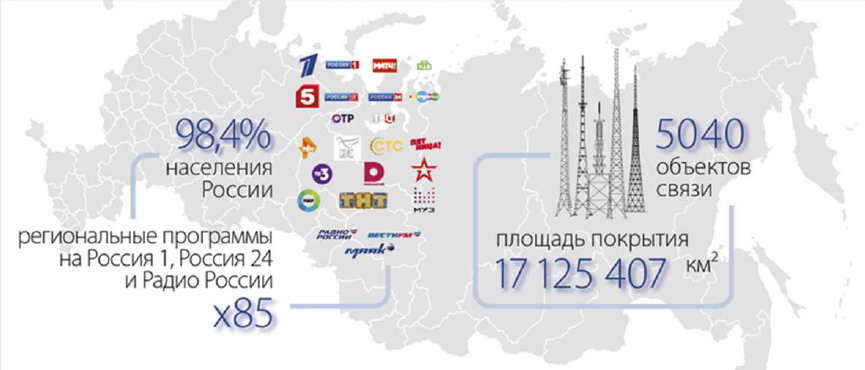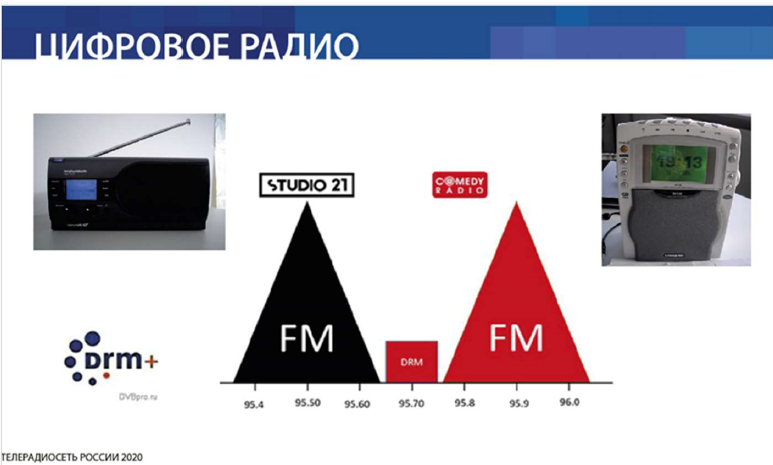
Source: Report on radio in Russia 2019
The annual report on the information industry in Russia covers many aspects of the media. Among these, we have focussed our attention on the move to digital TV, FM band migration and the increase in numbers of transmitters, and digital radio coming to a stop.
Analogue TV is dead! (but still operating alongside digital)

Source: Report on radio in Russia 2019
The switchover to digital was completed in 2019. It was proudly announced that the transition took ten years, which was faster than the United States (11 years), Australia (12) and Great Britain (14). In addition, with 98.4% of the population being able to tune in, Russia beats France (97.3%), Austria (96.0%), Switzerland (*) (95.0%) and Portugal (92.7%). However analogue TV is not totally dead. The national channels have been switched off, but the regional channels are still operating. And there are quite a few of them. Our FMLIST correspondent in the Republic of Karelia (east of Finland) confirmed that there are a good five of them in the city where he lives.
(*) Switzerland has switched off terrestrial TV via DVB-T in summer 2019
Radio stations move to FM

In order to listen to Radio Mayak and Vesti FM in big cities, new transmitters will be switched on and the present number of 1,167 will be increased to 2,000 by 2021. 572 have already been ordered
Source: Report on radio in Russia 2019
The state radio network will be moving from broadcasting on the OIRT band (between 65.8 and 74 MHz) to the European FM band (87.5-108 MHz), where the commercial radio stations are already present. New licences will be granted to Radio Mayak and Vesti FM in order to allow them to broadcast in all cities with over 100,000 inhabitants. In order to manage the increase in number of channels, they are studying isofrequency networks used abroad in countries like Moldavia, where the radio station Inter-FM can be received with traffic information along the motorway. A solution based on a lot of low power transmitters would also not infringe health regulations that limit the use of high power transmitters.
‘The market is not ready’ for DAB

Source: Report on radio in Russia 2019
The development of digital radio in Europe is analysed in the report. But this ‘revolution’ will not be happening in Russia. Even though frequencies for DAB+ transmissions have been allocated, this does not mean that they will be activated. The Ministry of Communications believes that the advertising market is not mature enough yet to justify the increase in the numbers of radio stations that can use updated technology.
St. Petersburg is experimenting with DRM+

Source: Report on radio in Russia 2019
Therefore the aim is to develop broadcasting systems such as DRM+ that allow a radio station to also transmit digital channels on the same FM frequency, leaving listeners free to equip themselves to receive transmissions in high quality sound, but not being obliged to replace their radio with a new one (estimated cost of about $10 US). In July 2019 Comedy Radio carried out tests in St. Petersburg by digitally broadcasting three channels on 95.7 MHz FM. The first one was a repeat of their analogue channel with a bitrate of 33 kbps, the other two were Avtoradio (43 kbps) and Evropa Plus (20 kbps).
